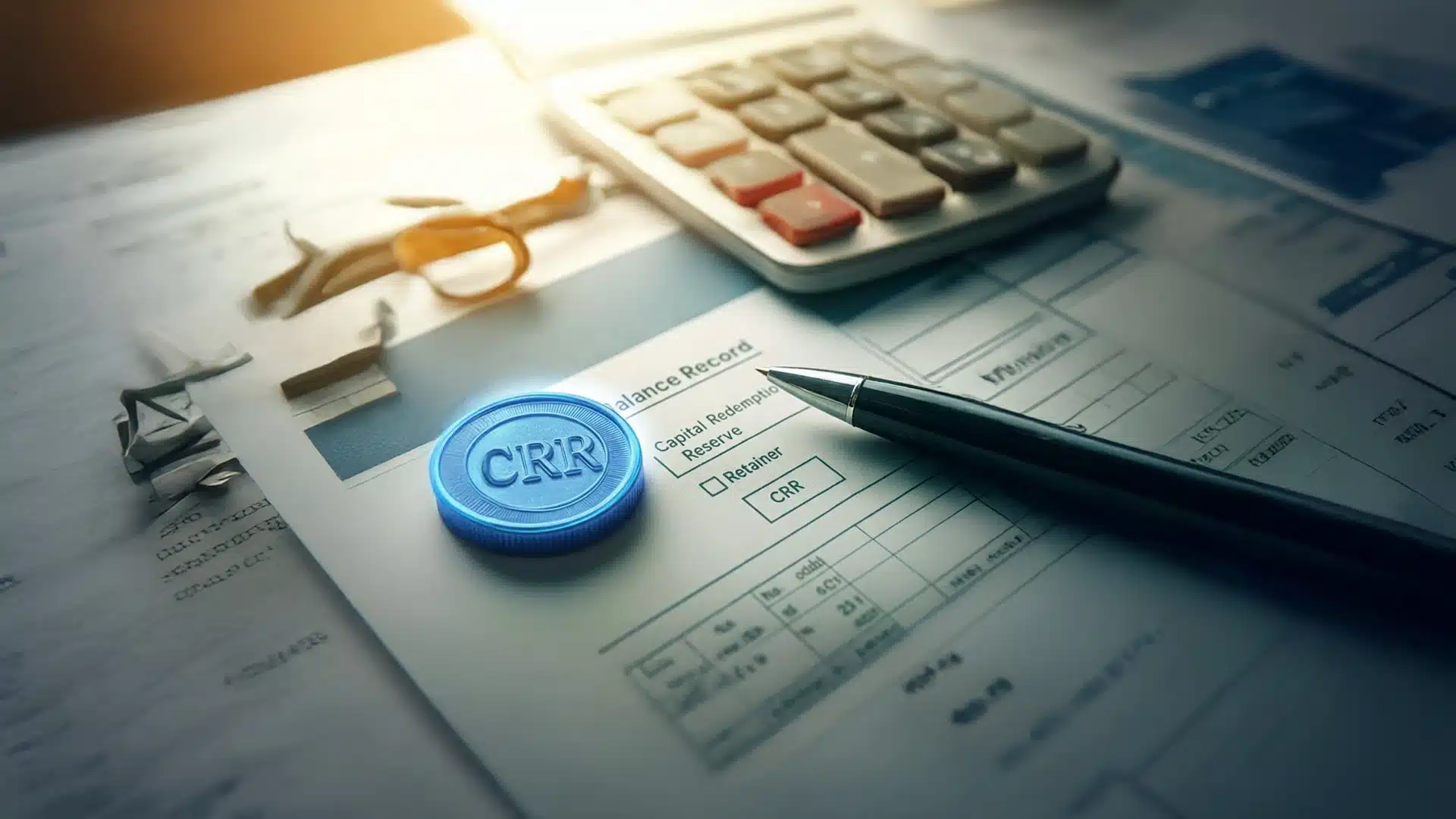What is NFC
The NFC full form is Near Field Communication. It is a wireless technology that lets two compatible devices exchange small bits of data when they are placed close together, usually within a few centimetres. The exchange uses electromagnetic fields, not wires or an internet connection.
The concept evolved from an older identification system known as Radio Frequency Identification, or RFID. Engineers expanded the idea to enable two-way communication, allowing data to move in both directions. This gave birth to NFC, which is now found in mobile phones, bank cards, and even smartwatches.
Most modern smartphones already have a built-in NFC chip. When you bring your phone near another NFC-enabled device or a payment terminal, it instantly creates a secure connection to share information. The process feels effortless because no manual pairing or configuration is needed.
NFC Meaning
The NFC’s meaning lies in how it enables touch-based interaction. It allows one device, such as a phone or card, to communicate with another by being physically close. The signal works only at a very short range, which improves safety and reliability.
Think of tapping your phone at a store counter to pay for something, scanning an entry tag at the office, or pairing a speaker by bringing your phone close to it. These small interactions are examples of how NFC quietly works behind the scenes to make everyday actions faster and smoother.
NFC functions without internet for tag reading and device-to-device setup; payments may still require connectivity at the terminal or issuer side. That reliability is one reason it has become an essential part of smart devices and contactless systems.
How NFC Works
Every NFC-enabled device has a transmitter and a receiver. When two devices come within range, one generates a small electromagnetic field that activates the other. This signal exchange allows data to move securely between them.
NFC operates in three distinct ways:
- Reader or Writer Mode: A device reads or writes data on an NFC tag.
- Card Emulation Mode: The phone behaves like a contactless payment card.
- Peer-to-Peer Mode: Two devices exchange small files, contacts, or links.
These functions operate at a frequency of 13.56 megahertz and have a very limited range. The short distance reduces the chance of interference or unauthorized access, which is why NFC is trusted for mobile transactions and authentication systems.
Today, most smartphones come with NFC in mobiles as a standard feature. It supports quick payments, smart automation, and faster pairing with wireless gadgets. NFC works quietly in the background, simplifying how people connect, pay, and interact with technology each day.
NFC in Mobiles
Role of NFC in Smartphones
In most modern smartphones, NFC in mobiles is built into the hardware as a small chip near the back panel. This chip allows your phone to act as both a reader and a transmitter. It can detect nearby NFC tags, connect to other compatible devices, and make secure wireless payments with just a tap.
Manufacturers have included this feature in nearly all new models across Android and iOS. The purpose is to give users a simpler and safer way to perform quick actions without relying on cables, passwords, or manual pairing. When you hold your phone close to another NFC-enabled device, the two start exchanging data instantly.
In many cases, NFC works in the background, so you don’t need to launch an app or select a device. The connection is instant and secure, designed to make your phone smarter in everyday interactions, whether you are paying, unlocking, or connecting accessories.
Mobile-to-Mobile Connectivity
NFC is also used to share small bits of data between two phones. Earlier versions of Android featured tools like Android Beam that let users transfer contact details, web links, or photos with a quick tap. While newer Android versions have replaced it with faster methods such as Nearby Share, the base technology that allows devices to “sense” each other is still NFC.
In some devices, NFC is used as a handshake before switching to Bluetooth or Wi-Fi for larger file transfers. That small tap you make to connect headphones or speakers is how NFC simplifies the setup process.
Real-World Applications
The use of NFC in mobiles extends far beyond payments. It is now part of how people access secure spaces, board public transport, verify identity, or even launch phone functions automatically. For instance, tapping a programmed tag at your workspace could switch your phone to silent mode or connect it to office Wi-Fi.
Retail stores and event venues also use NFC tags for contactless ticketing and promotions. In transportation, NFC-enabled cards or phones allow quick entry without swiping or scanning.
This technology continues to grow because it combines convenience with safety. Every tap is short-range and intentional, reducing the risk of misuse. That reliability is what makes NFC a silent but powerful feature inside every smartphone today.
NFC Tags and Sensors
What Is an NFC Tag
An NFC tag looks simple. It might be a small sticker, a card, or a thin circular chip, but it carries a tiny coil and microchip inside. That is where its power lies. When an NFC-enabled phone or another device touches it, the tag activates and shares the information stored inside, such as a web link, instruction, or command.
You might have seen these tags on posters that open websites when tapped, in hotel key cards that unlock doors, or on gadgets that connect automatically. They’re battery-less and draw energy from the phone’s electromagnetic field during the tap.
Types of NFC Tags
There are several kinds of tags, each with its own capacity and speed. Some are built for one-time use, like event tickets or product labels. Others can be rewritten several times to perform different functions, such as adjusting phone settings or launching an app.
Android phones work with most NFC tag types, while iPhones connect with selected ones depending on the iOS version. This variation is important when setting up automation or testing compatibility.
What Is an NFC Sensor
An NFC sensor takes the idea further. It is a component built into machines or systems that detects nearby NFC signals. Picture the payment machine at a supermarket counter or the entry gate at a metro station. The sensor reads the signal when your phone or card is near and processes the action, such as making a payment or unlocking access.
Some smart locks and home devices also use these sensors. They allow you to tap your phone for instant entry or to trigger a command like turning on the lights or setting the air conditioner temperature.
Everyday Use-Cases
People find creative uses for NFC tags and sensors. A tag near the front door can switch on Wi-Fi. Another one on the desk can mute notifications or start a timer. Businesses place them on brochures so customers can tap and learn more without searching online.
These small tags and sensors support NFC in mobiles by making actions faster, safer, and more personal with every tap.
NFC Payment and Banking
What Is NFC Payment
NFC payment is the most familiar use of this technology. It lets you pay for something by bringing your phone or card close to a payment terminal. There is no physical contact, no need to swipe or insert a card. The transaction completes within seconds.
When you tap your phone, it acts like a digital version of your card. The phone communicates with the payment terminal using near field signals. This process is called card emulation. It works through payment apps such as Google Pay, Apple Pay, or Samsung Pay, which store your card information securely in a virtual wallet.
Every time you make a payment, the app generates a unique encrypted code instead of sharing your actual card number. This makes NFC payments safer and more private. The entire system is designed to protect your information while keeping the process fast and easy.
How NFC Works in Banking
The role of NFC in banking has grown quickly. Banks now issue contactless cards that use the same technology. You can simply tap the card on the reader instead of inserting it. Many ATMs also support cardless withdrawals through NFC-enabled phones.
The system uses encryption and tokenization to protect transactions. Each tap creates a new digital token that cannot be reused, which keeps hackers from accessing your real details. That is why NFC is trusted for financial use.
Some banking apps have added features that use NFC for secure sign-ins or verification. For example, a phone can confirm your identity when accessing a branch kiosk or validating a digital signature.
Security Measures
Security has always been a focus for NFC. The short communication range itself makes it harder for anyone to intercept data. On top of that, most phones require fingerprint, face, or PIN confirmation before the payment goes through.
Still, it is wise to take small precautions. Use only verified payment apps, keep your phone’s software updated, and turn off NFC when you are not using it. These small steps reduce the risk of accidental transactions or unauthorized scans.
Future of NFC Banking
Banks are continuing to add new ways to use this feature. Digital cards, wearable payments, and tap-based identification systems are becoming common. As terminals upgrade and digital wallets expand, NFC payment will move beyond shopping into services, travel, and authentication.
Each year, the process becomes more seamless. What started as a simple tap to pay has now become a trusted part of everyday banking.
NFC Instruments and Applications
NFC Instruments
The term NFC instruments refers to devices that carry or use near field communication technology. These include smartphones, smartwatches, payment terminals, tablets, and other connected gadgets. Each has a built-in chip that enables quick and contactless interaction.
In smartphones, the NFC chip is usually placed near the back panel. It activates automatically when your phone is brought close to another NFC-enabled device or tag. This silent chip helps process transactions, verify access, and share data instantly.
Smartwatches use NFC to make contactless payments or pair with phones. Point-of-sale machines use it to accept those payments. Even wireless headphones, laptops, and printers now include NFC to simplify pairing and authentication.
Some transport cards, access badges, and identification systems are also built around the same principle. These are all part of a growing ecosystem that connects digital actions to real-world responses with a single tap.
Applications of NFC Instruments
- Access and Security Systems
Businesses use NFC-based access cards and attendance systems to manage entry securely. Hospitals and offices depend on it for identity verification, ensuring that only authorized devices or people can access certain areas or data. - Healthcare Devices
Medical tools and monitors use NFC to transfer patient records or readings between systems. This reduces manual data entry and keeps sensitive information encrypted during transfer. - Transportation and Ticketing
Public transport networks depend on NFC cards and mobile wallets for faster boarding and ticket validation. The system reads your phone or card instantly, reducing queues and physical ticket handling. - Retail and Marketing
Stores and brands use NFC-enabled tags on products, posters, or packaging. A quick tap can open websites, trigger promotions, or confirm authenticity. It helps bridge the gap between physical and digital engagement. - Smart Gadgets and Automation
In homes and workplaces, NFC tags are programmed to trigger small actions. For instance, tapping your phone can connect Wi-Fi, mute notifications, or set alarms. This simple setup brings automation within reach for everyday users.
NFC instruments have become an essential link between devices and their users. They make interactions faster, safer, and more intuitive, turning simple gestures into powerful actions.
Advantages of NFC
Convenience
NFC makes simple tasks quicker. There are no cables, logins, or pairing steps. A short tap can complete a payment, unlock a device, or start an app. The process is instant, designed to work even when your phone is offline. That ease of use is why NFC has become part of daily routines for many people who rely on phones for transactions and quick actions.
Speed and Efficiency
Transactions through NFC in mobiles take only a few seconds. This matters in busy places like stores, transport systems, and offices. You bring your phone close to the terminal, and the connection happens automatically. The speed helps reduce waiting time while keeping the process smooth and reliable.
Security
Security is built into how NFC works. Its short range limits interference, while encryption and tokenization protect sensitive information. Payment systems require biometric or PIN confirmation, adding another layer of safety. These combined measures make NFC one of the most secure ways to transfer data or complete digital payments.
Versatility
The uses of NFC reach beyond mobile payments. It supports automation, access control, travel passes, and medical devices. From scanning tags on products to connecting gadgets, its functions adapt to different needs. Businesses, healthcare providers, and transport networks continue to integrate it into new systems each year.
Energy Efficiency
NFC consumes very little power compared to other wireless connections. Tags do not use batteries, and phones use minimal energy when the feature is active. This low energy demand helps devices maintain longer battery life while keeping connectivity ready when needed.
Ease of Integration
Developers and manufacturers find NFC easy to include in devices. The hardware is compact and affordable, which allows even small gadgets to support touch-based interactions. This flexibility ensures that NFC remains compatible with an expanding range of technologies worldwide.
How to Use NFC
In Android
Using NFC in Android mobile phone devices is simple once you know where to find it. Most Android phones already have the feature built in. To check, open the settings menu and look for the “Connections” or “Connected devices” section. Inside, you will see an option named “NFC.” Switch it on.
After activation, the phone can read tags, share small files, or make payments through supported apps such as Google Pay or Samsung Pay. If you plan to use it for payments, set one app as your default wallet. This ensures the phone knows which service to use when you tap it against a payment terminal.
When making a transaction, hold your phone close to the NFC reader. The device should be unlocked and positioned near the area that contains the NFC antenna, usually the back upper part of the phone. Wait for a small vibration or beep that confirms the connection. Once the screen shows “Done” or a checkmark, the payment is complete.
NFC also helps with small automation tasks. You can program tags using apps like “NFC Tools.” For example, you can set one tag to activate silent mode or connect Wi-Fi just by tapping the phone on it.
The process does not need internet access and works instantly once set up.
In iPhone
Using NFC on an iPhone is equally straightforward. iPhones (7 and later) include NFC. iOS activates NFC automatically for payments; tag reading depends on the model/iOS and often works without manual toggling.
For payments, open the Wallet app and add your card details under Apple Pay. When paying, hold the top of the phone near the contactless reader and confirm the transaction using Face ID, Touch ID, or your passcode. The signal exchange takes place within a few seconds.
Apart from payments, iPhones can also read tags and trigger shortcuts. With the Shortcuts app, you can create personalized actions such as opening specific apps or adjusting phone settings when a tag is scanned.
Both Android and iPhone make NFC use simple and secure. Once enabled, it becomes a natural part of your routine, letting you interact with devices, apps, and payment systems with a single touch.
Conclusion
NFC has quietly become one of the most practical tools built into modern devices. It connects phones, cards, and gadgets in a way that feels effortless yet secure. A single tap can complete a payment, open a door, or share data, all without wires or manual setup.
The power of NFC in mobiles lies in its simplicity. It blends speed with safety, allowing users to interact with the world around them in seconds. From banking to transport, from home automation to healthcare, its reach continues to grow as technology evolves.
The next time you unlock a gate or make a purchase with your phone, remember that the action behind that smooth experience is NFC working silently in the background. It’s invisible, yet it shapes modern interactions—instant, reliable, and secure.
FAQs
1. How does NFC differ from Bluetooth or Wi-Fi?
NFC works over a very short range, usually within four centimetres, while Bluetooth and Wi-Fi operate across larger distances. It consumes less power and does not require pairing or passwords. The limited range makes NFC more secure for quick exchanges like mobile payments, ticketing, and identity verification.
2. Can NFC be used without an internet connection?
Yes, NFC functions independently of the internet. The connection relies on electromagnetic signals, not mobile data or Wi-Fi. This makes it useful for offline interactions (e.g., tag reading and initiating payments). Actual authorisation may still occur online. However, some apps that use NFC may still need internet access for transaction verification.
3. Are all smartphones equipped with NFC?
Most mid-range and high-end smartphones now include NFC hardware, but some budget models may not. You can check by looking under “Connections” or “Wireless Settings” in your phone’s menu. If you do not see an NFC option, your device may not support it natively.
4. Can NFC be used for transferring large files?
No, NFC is designed for lightweight communication. It transfers small data such as contact details, URLs, or payment credentials. For larger files, NFC only helps initiate a faster connection through Bluetooth or Wi-Fi Direct. Once that connection forms, the data moves through the stronger wireless link.
5. How secure are NFC transactions compared to regular card swipes?
NFC transactions are safer than traditional card swipes. The system uses encryption and tokenization, so your real card number is never shared. Each transaction generates a unique code that works once and then expires. Biometric verification adds another layer of protection against unauthorized use.
6. What are NFC tags used for in daily life?
NFC tags are used for automating phone actions, sharing links, and enabling smart access. For instance, a tag near your desk can turn on Wi-Fi, while one on your bedside can mute notifications. Businesses also use tags to provide instant product information or event check-ins.
7. Can NFC be used for authentication and security systems?
Yes, many companies now use NFC cards or mobile phones for identity authentication. When you tap an authorized device on a reader, it verifies your identity before granting access. This system is used in offices, schools, and secure facilities because it is faster and more reliable than passwords.
8. Does leaving NFC on drain the phone’s battery?
NFC uses very little power. It stays inactive until it detects another NFC signal nearby. Because of this low energy demand, keeping NFC switched on has almost no effect on battery life. Many users leave it on permanently without noticing any difference in performance.
9. Can hackers intercept NFC data during transmission?
It is technically possible but difficult due to the short range of NFC. A hacker would need to be extremely close to the devices during the exchange. Most NFC systems also use encryption and security tokens, rendering intercepted data unreadable and unusable.
10. Where is NFC technology heading in the next few years?
NFC will continue expanding beyond mobile payments. Future uses include smart IDs, healthcare tracking, public transport systems, and personalized automation in smart homes. As more everyday devices gain NFC support, the technology will become a common thread connecting digital and physical interactions seamlessly.








